Training a dog isn’t just about obedience—it’s about building a strong bond and creating a safe, happy environment for both the dog and their family.
As pet-care professionals, you have the unique opportunity to support pet parents in teaching their dogs essential commands that improve behavior, safety, and communication. By emphasizing the importance of basic commands, you can position your business as a trusted partner in dog training and care. Read on for the six commands every dog should know:
Why Basic Commands Matter
 Basic commands serve as the foundation for a well-behaved and secure dog. Commands like “sit” or “stay” help in daily situations, from greeting guests politely to waiting at a crosswalk. For pet parents, these commands foster confidence and ease in managing their dog’s behavior. Furthermore, training builds trust and understanding between pet and owner, strengthening their bond.
Basic commands serve as the foundation for a well-behaved and secure dog. Commands like “sit” or “stay” help in daily situations, from greeting guests politely to waiting at a crosswalk. For pet parents, these commands foster confidence and ease in managing their dog’s behavior. Furthermore, training builds trust and understanding between pet and owner, strengthening their bond.
Pet-care businesses can play a vital role in this process. Offering training classes, one-on-one sessions, or even informational workshops helps pet parents understand the importance of these commands and provides them with the tools to practice effectively at home.
The Six Essential Commands

-
Sit: Teaching a dog to sit is often the starting point for training. It’s simple yet invaluable in situations like calming an excited dog before a walk or ensuring they don’t jump on visitors. For pet parents, “sit” becomes a go-to for maintaining control in public spaces or busy environments.
-
Stay: A solid “stay” command is crucial for safety. Whether at the vet’s office or near a busy street, this command keeps dogs in place when necessary. Pet-care businesses can help reinforce this skill by incorporating it into group play sessions or daycare activities.
-
Come: Recall is one of the most important commands for a dog’s safety. A reliable “come” ensures the dog returns to their owner when off-leash or in unpredictable situations. Businesses offering outdoor playtime can practice recall in a controlled environment, giving pet parents peace of mind.
-
Leave It: Dogs are naturally curious, which can sometimes lead to trouble. Teaching “leave it” prevents them from picking up harmful items or engaging with things they shouldn’t. Highlight the importance of this command during your grooming sessions or when walking dogs in your care.
-
Down: “Down” is a versatile command that encourages calm behavior. For example, it’s helpful for a dog who likes to jump on furniture or gets too excited during meals. Pet-care professionals can model and practice this command in boarding or daycare settings.
-
Heel: Every dog should be able to walk calmly on a leash. The “heel” command prevents dogs from pulling or darting unexpectedly, making walks safer and more enjoyable for everyone involved.
How Your Pet-Care Business Can Help
Pet-care businesses have the expertise and resources to collaborate with pet parents on training. Offering training workshops tailored to basic commands or incorporating training into your daycare or boarding services can be a game-changer. For example, you could offer “training refreshers” during daycare hours or organize group classes that combine socialization with skill-building.
Additionally, sharing tips and training videos on your social media or blog demonstrates your authority as a pet-care expert while giving pet parents accessible tools to practice at home. By guiding pet parents through the training process, you not only build trust but also create long-lasting client relationships.
 Helping pet parents teach their dogs these six basic commands goes beyond training—it’s about creating harmony in the lives of both pets and their families. With your guidance, pet parents can build a strong foundation of trust and communication with their dogs, ensuring a lifetime of wagging tails and happy memories.
Helping pet parents teach their dogs these six basic commands goes beyond training—it’s about creating harmony in the lives of both pets and their families. With your guidance, pet parents can build a strong foundation of trust and communication with their dogs, ensuring a lifetime of wagging tails and happy memories.
See how much easier running a pet-care business can be with Revelation Pets. Start your free trial!






